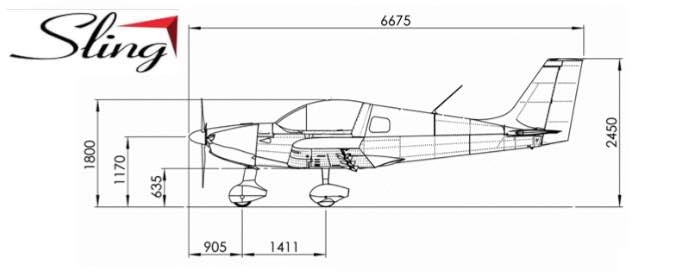The sight of rudder pedals in their proper home makes the whole project seem like it’s on track to be a finished airplane. That’s important for me to realize, now and again, and helps to reinforce the idea that finishing the airplane is possibly doable.
My Sling-branded rudder pedals are an option that I knew about, liked, and deliberately ordered with the quick-build kit. When my QB kit was delivered, the pedal parts I ordered were not there. Most of the related parts I got were for toe-brakes. It took more than 6 months to get things sorted out with the factory and finally get all of the parts for the pedals I ordered — all good now.
The typical braking configuration for Sling airplanes is a simple, single hydraulic master cylinder, lever-operated mechanism that evenly applies the Matco disc brakes for both main wheels. Toe-brakes are a necessity for Sling tail-draggers, but are available as an option for us lowly nose-dragger pilots. Space is pretty tight for 4 independent toe-brake master cylinders with all of the plumbing. From what I’ve been able to determine, Sling pilots find they like the hand-brake, even if they’re used to toe-brakes. I’m going for simplicity. My Piper Warrior has toe-brakes. They’re fine, until they leak all over your pedals and carpet and demand maintenance. I’ve been there, done that and got the T-shirt – thank you very much. Simplicity is a virtue. I’m going through the simple-is-better phase of my life now. You can have toe-brakes in your Sling.
I had hoped that I’d be done with this pedal mounting business – the final assembly. But, it’s turned into a trial attempt. The pedal tubes, bushings and brackets fit nicely, but I did find some clearance issues with the pedal stops that I’ll need to address. That means the whole pedal assembly has to come out again, except for the permanently riveted floor brackets. As I moved the pedals I heard squealing. It’s a little hard to explain, but the edges of the lower hands of the stops can (and do) occasionally touch the edges of the control arms where the nose-wheel pushrods and rudder cables attach. I have to do something. Exactly what, I don’t quite know. Something will come to mind. That’s where procrastination comes in.
Fortunately, I’ve elected to retain the top bushing brackets with M4 x 12mm SS cap screws, washers and elastic stop-nuts. That makes for straightforward disassembly. (I may eventually be forced to use 4mm pulled rivets, if the retainers show any signs of movement, but for now the M4 screws seem reasonable. Space is very tight and riveting would be a challenge – explanation below.)
Typically, the rudder pedal floor brackets, tubes and stops are fitted and mounted much earlier during fuselage assembly, with just the CF floor sitting ever so conveniently on the workbench. For my factory-assembled QB project, this didn’t happen and I’m doing the fitting and assembly work inside the completed CF structure. It’s certainly more challenging to do this work while kneeling and reaching into the cockpit foot wells.
